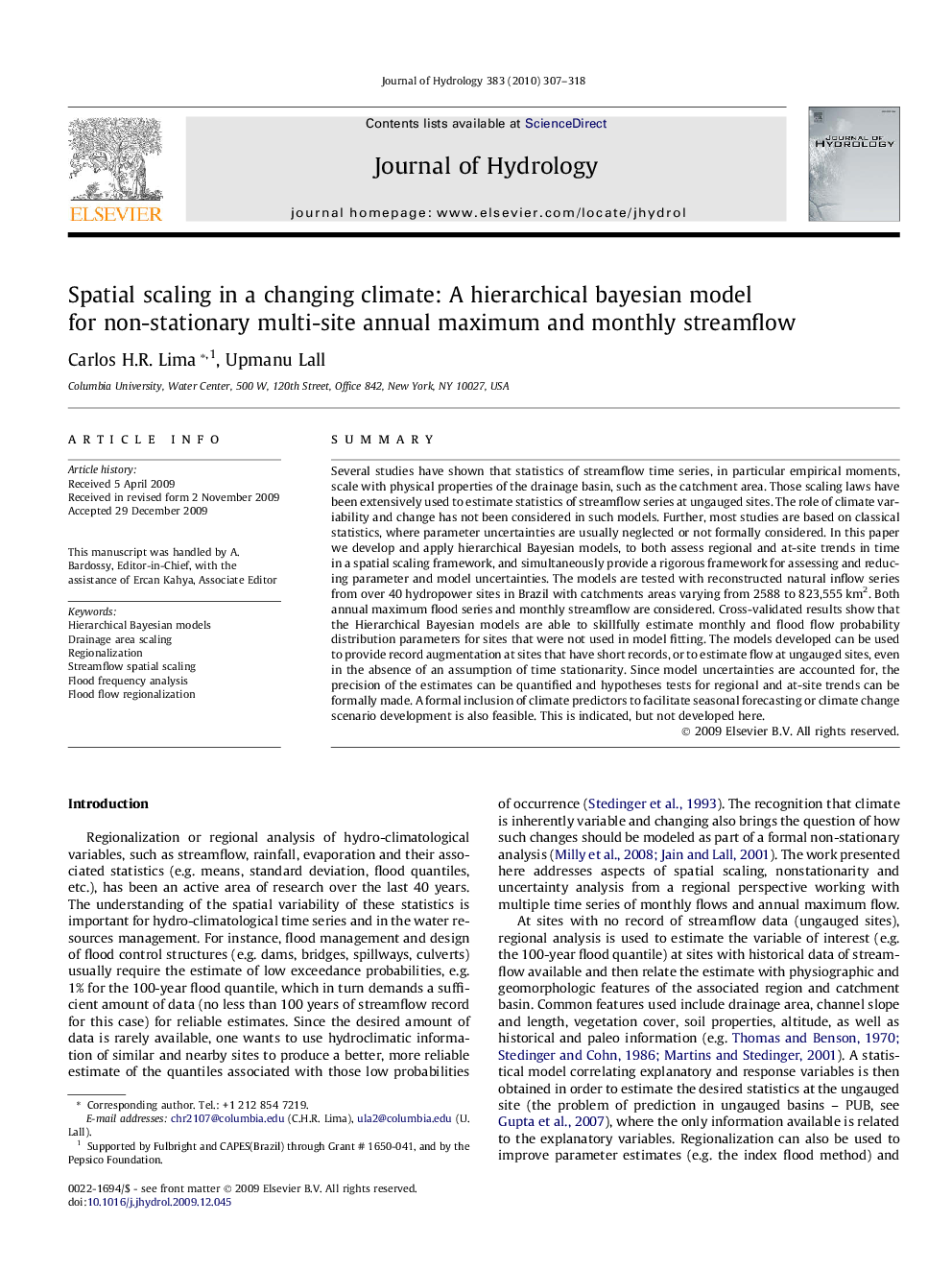| Article ID | Journal | Published Year | Pages | File Type |
|---|---|---|---|---|
| 4578477 | Journal of Hydrology | 2010 | 12 Pages |
SummarySeveral studies have shown that statistics of streamflow time series, in particular empirical moments, scale with physical properties of the drainage basin, such as the catchment area. Those scaling laws have been extensively used to estimate statistics of streamflow series at ungauged sites. The role of climate variability and change has not been considered in such models. Further, most studies are based on classical statistics, where parameter uncertainties are usually neglected or not formally considered. In this paper we develop and apply hierarchical Bayesian models, to both assess regional and at-site trends in time in a spatial scaling framework, and simultaneously provide a rigorous framework for assessing and reducing parameter and model uncertainties. The models are tested with reconstructed natural inflow series from over 40 hydropower sites in Brazil with catchments areas varying from 2588 to 823,555 km2. Both annual maximum flood series and monthly streamflow are considered. Cross-validated results show that the Hierarchical Bayesian models are able to skillfully estimate monthly and flood flow probability distribution parameters for sites that were not used in model fitting. The models developed can be used to provide record augmentation at sites that have short records, or to estimate flow at ungauged sites, even in the absence of an assumption of time stationarity. Since model uncertainties are accounted for, the precision of the estimates can be quantified and hypotheses tests for regional and at-site trends can be formally made. A formal inclusion of climate predictors to facilitate seasonal forecasting or climate change scenario development is also feasible. This is indicated, but not developed here.
